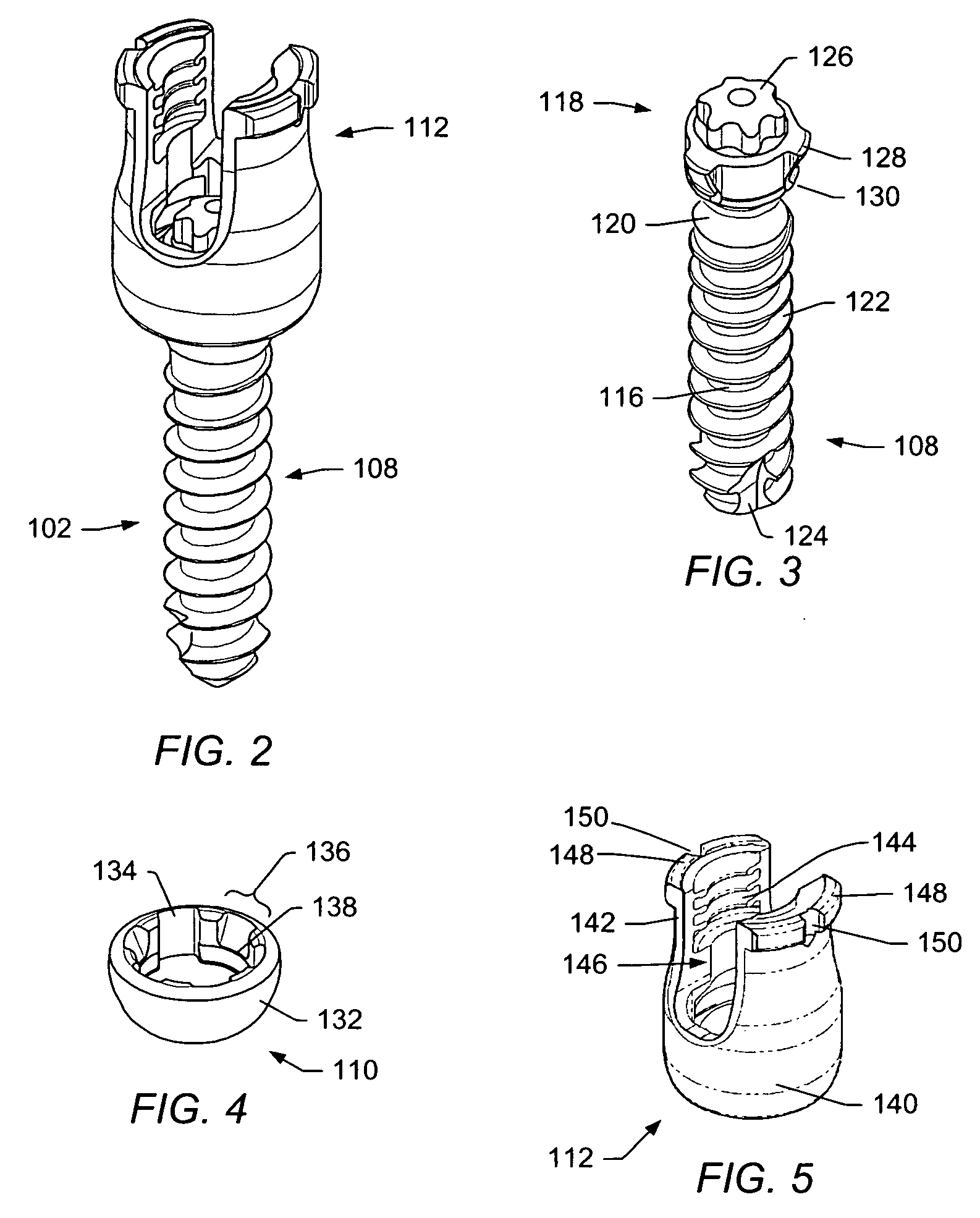Instruments and methods for adjusting separation distance of vertebral bodies with a minimally invasive spinal stabilization procedure
a technology of spinal stabilization and separation distance, which is applied in the field of instruments and methods for adjusting the separation distance of vertebral bodies with a minimally invasive spinal stabilization procedure, can solve the problems of destabilizing bone and affecting surrounding structures, pain and/or nerve damage, and altering the desired spacing between adjacent vertebrae, etc., to facilitate coupling the adjuster
- Summary
- Abstract
- Description
- Claims
- Application Information
AI Technical Summary
Benefits of technology
Problems solved by technology
Method used
Image
Examples
Embodiment Construction
[0057] A spinal stabilization system may be installed in a patient to stabilize a portion of a spine. Spinal stabilization may be used, but is not limited to use, in patients having degenerative disc disease, spinal stenosis, spondylolisthesis, pseudoarthrosis, and / or spinal deformities; in patients having fracture or other vertebral trauma; and in patients after tumor resection. A spinal stabilization system may be installed using a minimally invasive procedure. An instrumentation set may include instruments and spinal stabilization system components for forming a spinal stabilization system in a patient and for facilitating compression or distraction of one or more vertebral bodies.
[0058] A minimally invasive procedure may be used to limit an amount of trauma to soft tissue surrounding vertebrae that are to be stabilized. In some embodiments, the natural flexibility of skin and soft tissue may be used to limit the length and / or depth of an incision or incisions needed during the ...
PUM
 Login to View More
Login to View More Abstract
Description
Claims
Application Information
 Login to View More
Login to View More - R&D
- Intellectual Property
- Life Sciences
- Materials
- Tech Scout
- Unparalleled Data Quality
- Higher Quality Content
- 60% Fewer Hallucinations
Browse by: Latest US Patents, China's latest patents, Technical Efficacy Thesaurus, Application Domain, Technology Topic, Popular Technical Reports.
© 2025 PatSnap. All rights reserved.Legal|Privacy policy|Modern Slavery Act Transparency Statement|Sitemap|About US| Contact US: help@patsnap.com



